5 essential moves for working on the deep core muscles that protect you from injury

As runners, we've probably all read or been told how important it is to do strength and conditioning, and in particular to strengthen our core. And from the point of view of both improving your running, and preventing injury, that is certainly true. However, many people assume that 'core' is basically the same thing as 'abs' - and so focus solely on exercises that target the belly area. However, most traditional core exercises - think planks and sit-ups – don’t translate into the kind of stability needed to fully power your running or protect you from injury.
Why should runners be working on their deep core muscles?
‘Runners need a better strategy to create the stability that supports the demands of running' says Julie Wiebe, a physiotherapist who specialises in working with athletes. ‘The inability to use the deep core muscles is a major contributing factor to running injuries,’
To do that, according to Wiebe, you need to get to the core of your core. Most of the standard ab exercises tend to involve the 'superficial' or more visible muscles - think six packs and your rectus abdominis. But while these muscles do indeed play a role in running, stability starts much deeper than that: the group of muscles that are sometimes referred to as the 'inner core'. These are the diaphragm, pelvic floor, multifidus (attached to the spine) and transversus abdominis (the only ab muscle in the bunch).
Wiebe also likes to call these muscles ‘the anticipatory core’ because they have the ability to switch on and stabilise the body before you even take a step. ‘Multiple studies have shown that in a simple arm movement, these core muscles activate before the shoulder muscles that create the movement,’ says Wiebe.
‘These deep muscles have the unique capacity to turn on before movement to control the centre of the body.’ Studies also show anticipatory contractions occur in the pelvic floor before hip or foot movements in running.
If you’re not engaging your inner core, the outer core can’t function properly, and you’ll lack the stability to power your running, says Wiebe. The result? Decreased performance and greater potential for injury.
Women are more likely to have difficulty activating their inner core muscles, in part because the female pelvic floor is more prone to dysfunction (owing to anatomy and poor posture habits or as a result of pregnancy). But in both men and women, pelvic floor issues can manifest elsewhere in the body, causing pain in the lower back, hip or knee.
So how do you get your inner core functioning properly? It starts with breathing. When you inhale using your diaphragm (allowing your ribcage to open to the sides and belly to expand) rather than just breathing using your chest, your pelvic floor and transverse abdominis muscles lengthen. When you exhale, your pelvic floor and transverse abdominis recoil. This generates tension in your torso, which anchors your core and creates stability when you run. Wiebe’s strategy starts here, with exercises that teach you how to engage your inner core. Practising them will teach your body to recruit these muscles and connect them with the outer core, which will eventually carry over to your running.
Before you start
Perform these exercises with this neutral posture.
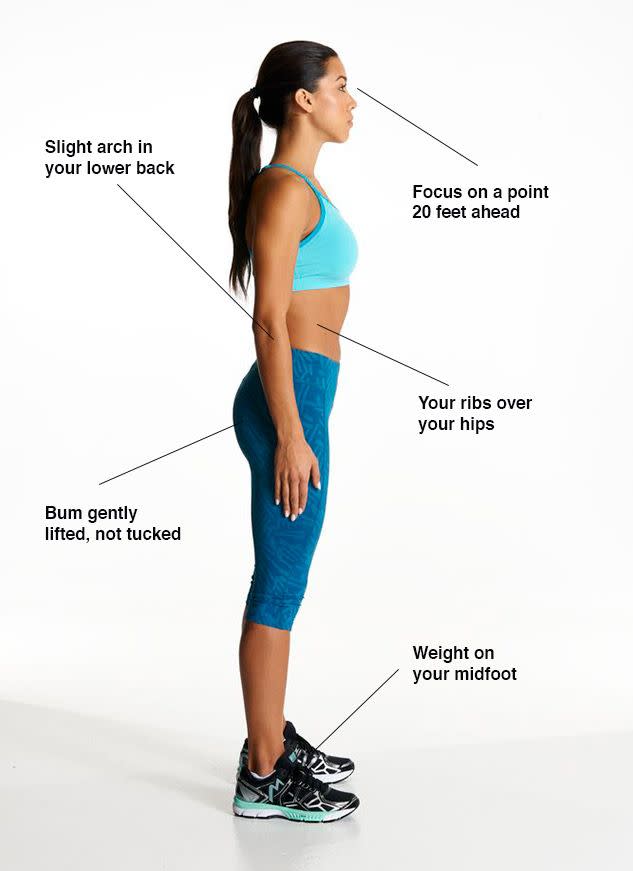
Breathe right
If there’s one rule to remember when learning to use your deep core muscles, it’s ‘blow before you go’. This means exhale while gently lifting your pelvic floor before you move. Here’s a breakdown.
1. Start in neutral posture (above).
2. With one hand on your ribcage, inhale through your nose; feel your ribcage expand.
3. Exhale and lift your pelvic floor muscles by imagining you are stopping the flow of urine.
4. When you are doing the exercises, exhale as you move through each repetition.
5. Inhale as you reset back to the starting position of each exercise.
1. Squat with pull-down
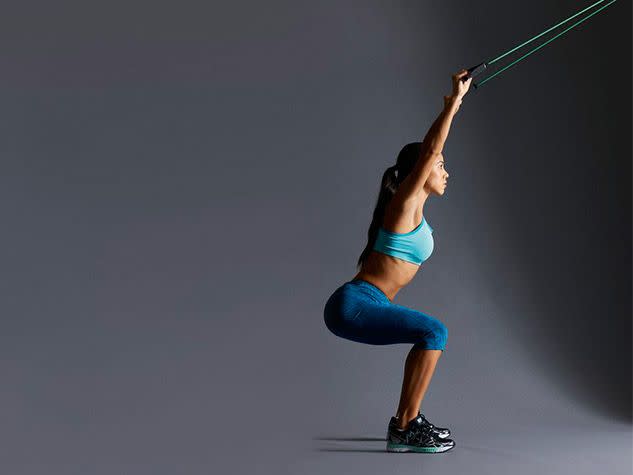
Why: Works your glutes and back; recruits your inner core for stability.
How: Attach a resistance band overhead. Hold both handles. Step back and, when your arms are straight, inhale and squat. Exhale and lift your pelvic floor. Continue to exhale as you return to standing, pulling the handles to your hips. Inhale and squat again, returning your arms to the starting position. Repeat five to 10 times.
2. Ski jump
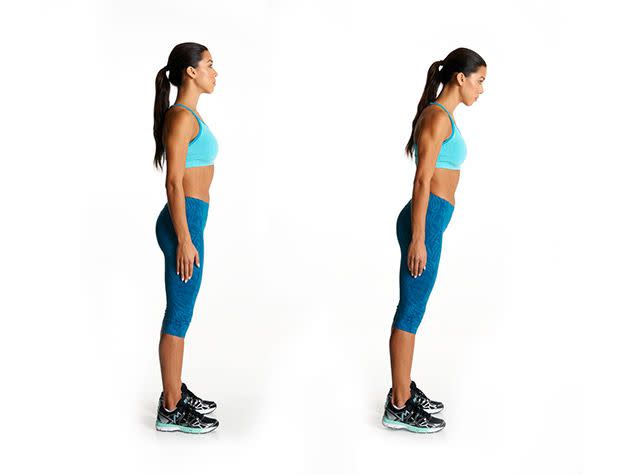
Why: Helps you find neutral alignment while leaning (to mimic running posture).
How: Stand in a neutral posture. Lean forward from your ankles and shift your weight to your forefoot. Don’t tuck in your bum. Exhale and inhale (as in Breathe right, above). Repeat a few times until you have a feel for breathing in this position.
3. Towel pull
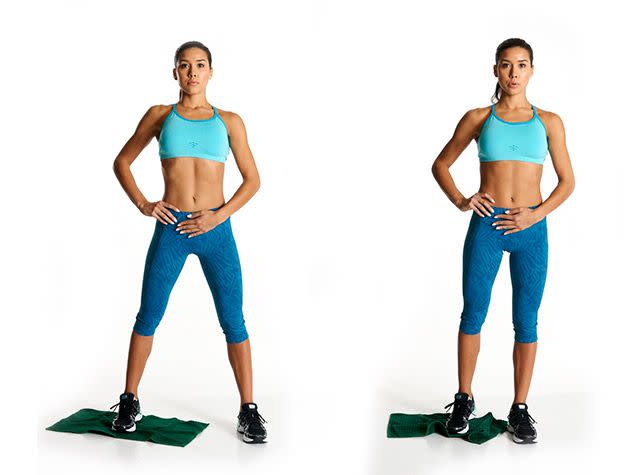
Why: Recruits your inner core to work your abductors and adductors.
How: Stand in a neutral posture, and place your right foot on a towel. Inhale and feel your belly rise and pelvic floor soften as you slide your right foot out. Exhale and lift your pelvic floor. As you exhale, pull the towel back. Do 10 times on each side.
4. Weight shift
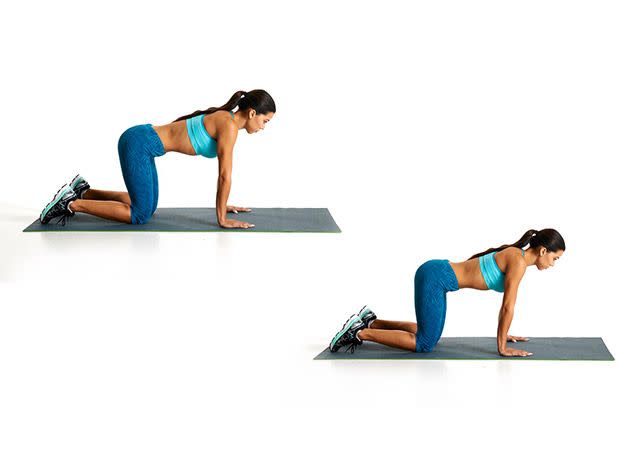
Why: Activates your inner core.
How: On your hands and knees, inhale and feel your belly expand and pelvic floor soften. Exhale as you lift your pelvic floor. Keep exhaling as you rock forward (your shoulders will go past your wrists). If you exaggerate the curve in your lower back, you’ve gone too far. Reset with an inhale. Do this 10 times.
5. Reverse star jump
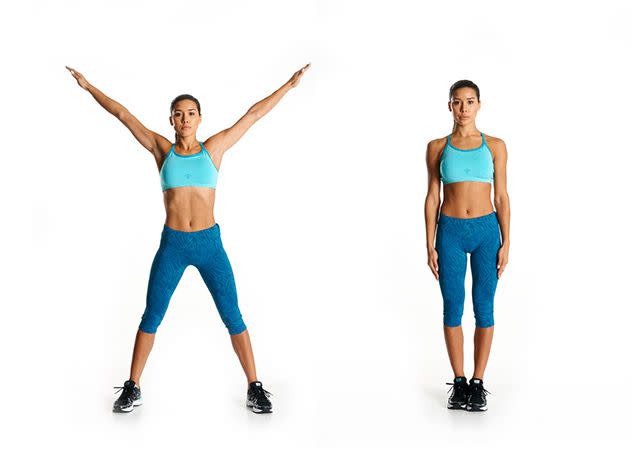
Why: Working your inner core while doing plyometrics prepares it for running.
How: Stand with your feet wide and arms overhead. Inhale; feel your belly rise. Exhale as you lift your pelvic floor. Continue to exhale; jump your feet together and lower your arms. Step back out; do this 10 times. Progress to full-speed jumps.
You Might Also Like

 Yahoo Sport
Yahoo Sport 





































